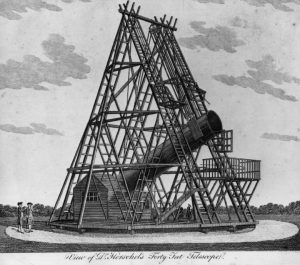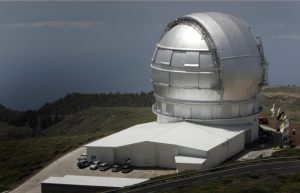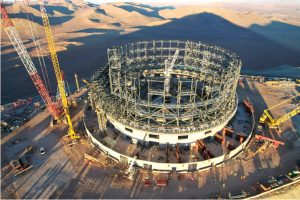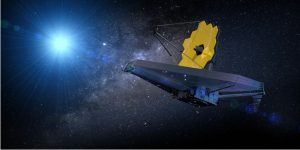In the grand tapestry of human history, no invention has had as profound an impact on our understanding of the cosmos as the telescope. From its humble beginnings in the early 17th century to the state-of-the-art instruments of today, telescopes have transformed our perception of the universe and our place within it.

In 1608, a German-Dutch spectacle maker named Hans Leppershey filed a patent for his instrument “for seeing things far away as if they were nearby”, which used lenses to focus light and provide a magnified view of distant objects—the earliest known design for a telescope. News of the invention spread rapidly across Europe, reaching Galileo Galilei in May 1609. The ultimate “early adopter”, Galileo built his own version within days, without ever seeing the original, and after some iterations his telescope could magnify objects thirty times. His observations of the four main moons of Jupiter and the different phases of Venus caused a storm in astronomy, eventually leading to the adoption of a heliocentric planetary model—a Sun-centred cosmos—and Galileo’s trial for heresy by the Roman Inquisition.
Telescopes over the centuries
Johannes Kepler’s telescope design of 1611 improved on Galileo’s, with a wider field of view, but it turned the image upside down—fine for astronomy but not good for spying on one’s neighbours. Isaac Newton is credited with developing the earliest known working reflecting telescope in 1668, which used a concave mirror instead of lenses to focus light, allowing for very large diameter objectives. Today, most telescopes used in astronomical research are reflectors rather than refractors.

The largest telescope of the 18th century was built by the British astronomer William Herschel, the discoverer of the planet Uranus. Known as the Great Forty-Foot, it was a reflecting telescope with a primary mirror 120 centimetres in diameter and a focal length of 12 metres. The behemoth held the record for largest telescope in the world for 50 years but was so unwieldy to operate that it wasn’t much of an improvement on smaller telescopes, although it did become a local tourist attraction.
Two of the greatest astronomical discoveries of the 20th century—that other galaxies exist, and that the universe is expanding—were made in the 1920s by Edwin Hubble using the newly built 100-inch (2.5 metre) Hooker telescope at Mt. Wilson Observatory in California, which was the world’s largest telescope between 1917 and 1949. Today it is the largest telescope available for hire.
Size matters
While the mirror in Newton’s first reflector telescope was only 3.3 centimetres in diameter, the world’s largest single reflecting telescopes now have mirrors as large as eight metres in diameter. For example, the Very Large Telescope in Chile, South America, built and operated by the European Southern Observatory (ESO), consists of four telescopes each with a primary mirror diameter of 8.2 metres.
Bigger is better is a mantra astronomers live by, but mirrors much larger than eight metres are very difficult to grind and polish. The solution is to combine segmented mirrors, usually in a hexagonal shape, which are joined together to form a huge reflecting surface. The world’s largest single-aperture optical telescope is the Gran Telescopio Canarias in Spain’s Canary Islands, whose 36 segments form a mirror 10.4 metres across with a light-collecting surface of 78.5 square metres.

But this will be eclipsed later this decade by ESO’s Extremely Large Telescope, currently under construction in the Atacama Desert in northern Chile at an altitude of 5,000 metres. Its primary mirror will be almost 40 metres across and made up of 798 segments, providing a light-collecting area of 978 square metres, equivalent to five tennis courts. When it is operational in 2028, one of its goals will be to study exoplanets in detail.
Although radio telescopes look more like mushrooms or woks, they work similarly to optical telescopes by collecting the radio frequency part of the electromagnetic spectrum emitted by astronomical objects such as pulsars. The world’s largest radio telescope is the 500-metre Aperture Spherical Telescope (FAST) in southwest China, which became fully operational in 2020. The famous 305-metre Arecibo radio telescope in Puerto Rico, which once featured in a James Bond film, will be decommissioned after collapsing in 2020.
Our eyes in space
Although much smaller than their ground-based cousins, space telescopes operate where their view of the cosmos is unobstructed by Earth’s atmosphere. There are more than two dozen in operation, with Hubble the best known and the new James Webb the largest. Webb’s primary mirror is made up of 18 hexagonal segments that together form a mirror 6.5 metres in diameter, compared with Hubble’s 2.4 metres. This gives Webb a light-collecting area of about 25 square metres, six times that of Hubble. Other space-based observatories, such as the Chandra X-Ray Observatory and the Spitzer Space Telescope, have allowed us to study the universe in X-ray, infrared, gamma ray and other non-visible wavelengths, revealing exotic phenomena such as black holes and star formation in dusty regions.

From their earliest days, telescopes have always been wonders, revealing aspects of reality hidden from our five senses. Through telescopes we have discovered new worlds, unravelled the mysteries of the cosmos, and gained insight into our place in the vastness of space and time.
Comments on this publication